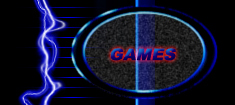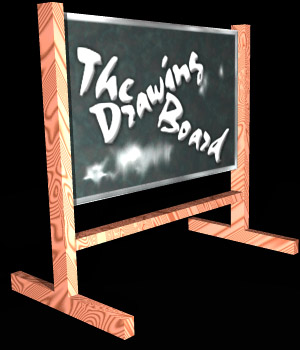







by Logan Everett (E-mail Me)
#6 - Game Environments
Now that we've addressed the basic parts to a game, we can now analyze how combining and relating certain parts creates the environment of the game. You may wish to refer back to the last editorial.
First of all, what is an environment in general? It's our surroundings. The forest is an environment. The city is an environment. So, applying this theory to games we can say that the player's surroundings are the environment. Whether a level is filled with trees or buildings is determined by its environment.
How do we show the player what the environment is? The key word here is show as graphics will be the most important part of the game environment. The textures (in a 3D game) or tile-set (in a 2D game) would usually be grouped by environment. For example, a 3D game might have 3 wad files: "basement.wad", "alien.wad", and "airport.wad", where each ".wad" file contains all the textures necessary for each environment. Then the levels would progress through the basement of a building, then an alien planet, finally ending at an airport. The purpose of splitting graphics by environment is pretty obvious. When the player goes to an airport level, the game can just load "airport.wad" instead of all three files, and this will save memory on the computer.
Following the graphical guidelines of these environments, a level designer would try to use only textures from wad to create a more realistic level. This is an excellent tip for those of you who are into 3D level design, by the way. Try using textures from only one or two ".wad" files and you may find that your levels look much more realistic. Sounds and music may also be important in the game environment, but not always.
Now, graphics aren't the only part of a game, and there has to be more to an environment than that. Some games have enemies, items, or obstacles (a.k.a. game pieces) that appear only in one or two environments. For example, let's say we have flying suitcases that we can put in our game. These present an obstacle because the player has to dodge them. But it wouldn't make sense to put them on an alien planet. The player would expect to see them, however, in an airport. It just makes more sense.
Now comes the power struggle; who decides what environment to use? Ultimately this is up to the game designer in any development team. Game environments should always fit into the story line. If level 3 is a desert and level 4 is an arctic mountain, the player had better understand why. It helps to make a list of all your game environments and some common characteristics before anyone starts work on the graphics or levels. Than it's up to the graphic designers to make the environment look right, and the level designers to place the right pieces and use the right graphics together.
So, now we have a more complete definition. A game environment is a combination of game media (graphics/sound/music) and game pieces that create the illusion of a certain setting. The game environment should always follow the story line. I've mentioned a few different environments in this editorial, but here are some questions to ask yourself when designing a game environment.
- Is it natural or manmade? There are plenty of ecosystems you could research, such as a desert, a forest, an arctic mountain, or an ocean. Or you could you study the architecture of various human structures, such as skyscrapers, airports, and ocean liners.
- Is it realistic or fantasy? Sure, you could do research on any of the things listed above. Or, you could be creative and create an alien garden of giant pod mushrooms or an underwater city. If you do go realistic I suggest that you at least have some pictures of what you're mimicking to study from.
- What time period is this environment? This is more a factor if you chose a realistic environment, but if you're creating a complete fantasy world, you may want to consider several time periods for the story to run through.
- What special game pieces fit here? This is the last question to ask. After you have decided exactly what the environment is, you should think about how you are going to let the play interact with this environment.
One final thing to consider is environment flow, or the overall shift between different environments throughout the game. I can't remind you enough that the environments should always be explained by the story line. Some games place all levels of a given environment in a row. For example, levels 1-5 are the forest levels, 6-10 are the city levels, and 11-15 are the castle levels. I refer to this flow as segmented and there is nothing wrong with it. Quite frankly it is probably the easiest way of doing things.
However, some games, such as Starcraft, shift constantly between different environments. I call this flow steady and it works as well. Other games might group their levels together, but not in a single lump. For example, we have a game as follows:
- Levels 1-3: Forest
- Levels 4-6: City
- Levels 7-9: Castle
- Levels 10-12: Forest (again)
- Levels 13-15: Castle (again)
So we see that, although levels are grouped by environment, these environments are not exclusive to one group. I call this semi-segmented. I prefer this method in most cases because it allows the story line to focus on a single area for several levels, but also allows the player to return to this environment when they have developed more skills in the game. This way the designer can present new obstacles the second time around and develop the environment more.
One final note: Some games don't require different environments at all. "Tetris" didn't have environments and it's one of the most famous games of all time. "Solitaire" doesn't have environments, nor does the original "Pacman" or "Pong". However, the more complex your game is, the more you should consider environments. Go back and look at games like "Super Mario World" and you will see well-defined environments. There are no levels that are mostly forest with some lava. Each dungeon in "Zelda: Link to the Past" has its own unique look and the various ecological areas of Hyrule had clear boundaries. Use environments wisely and they can only improve your game.
Page Updated: 2/25/00
